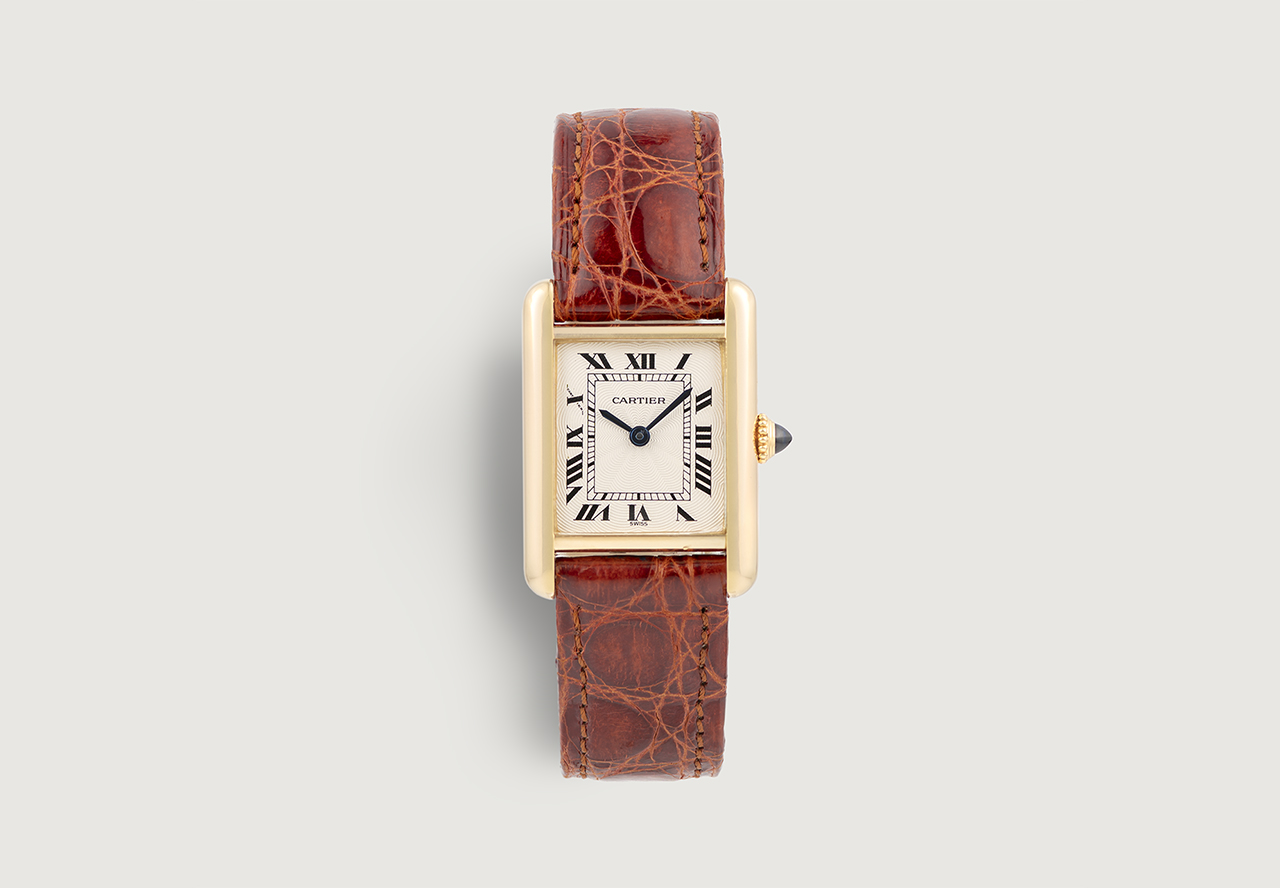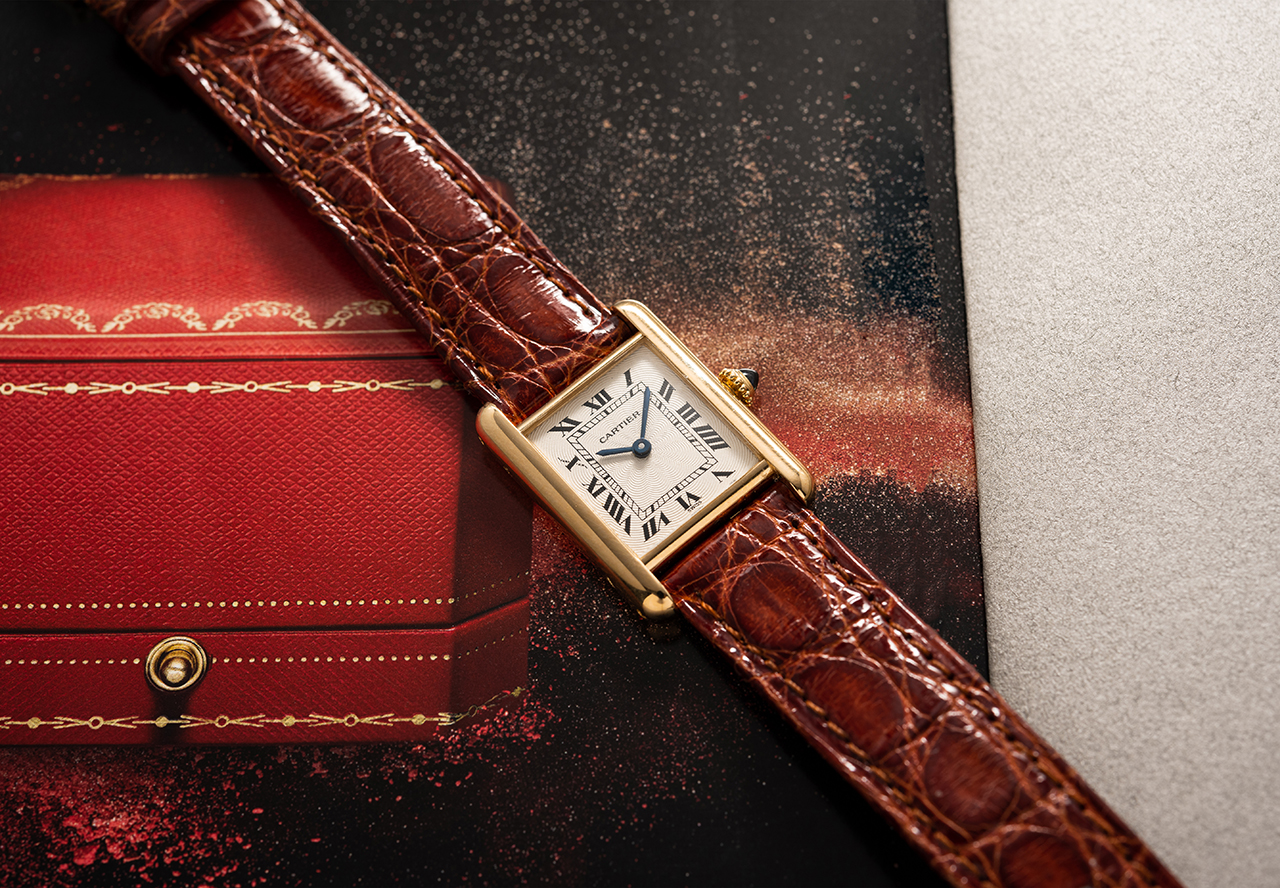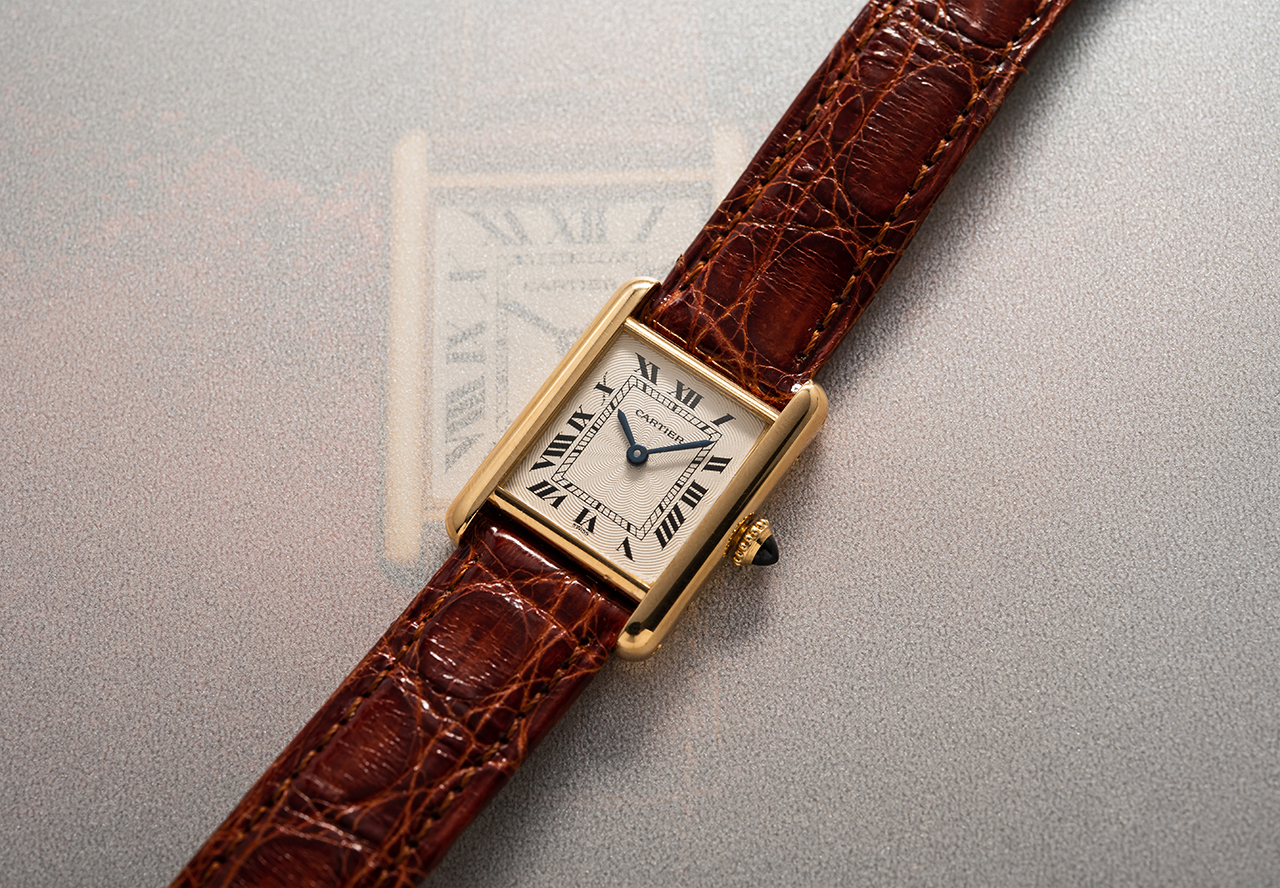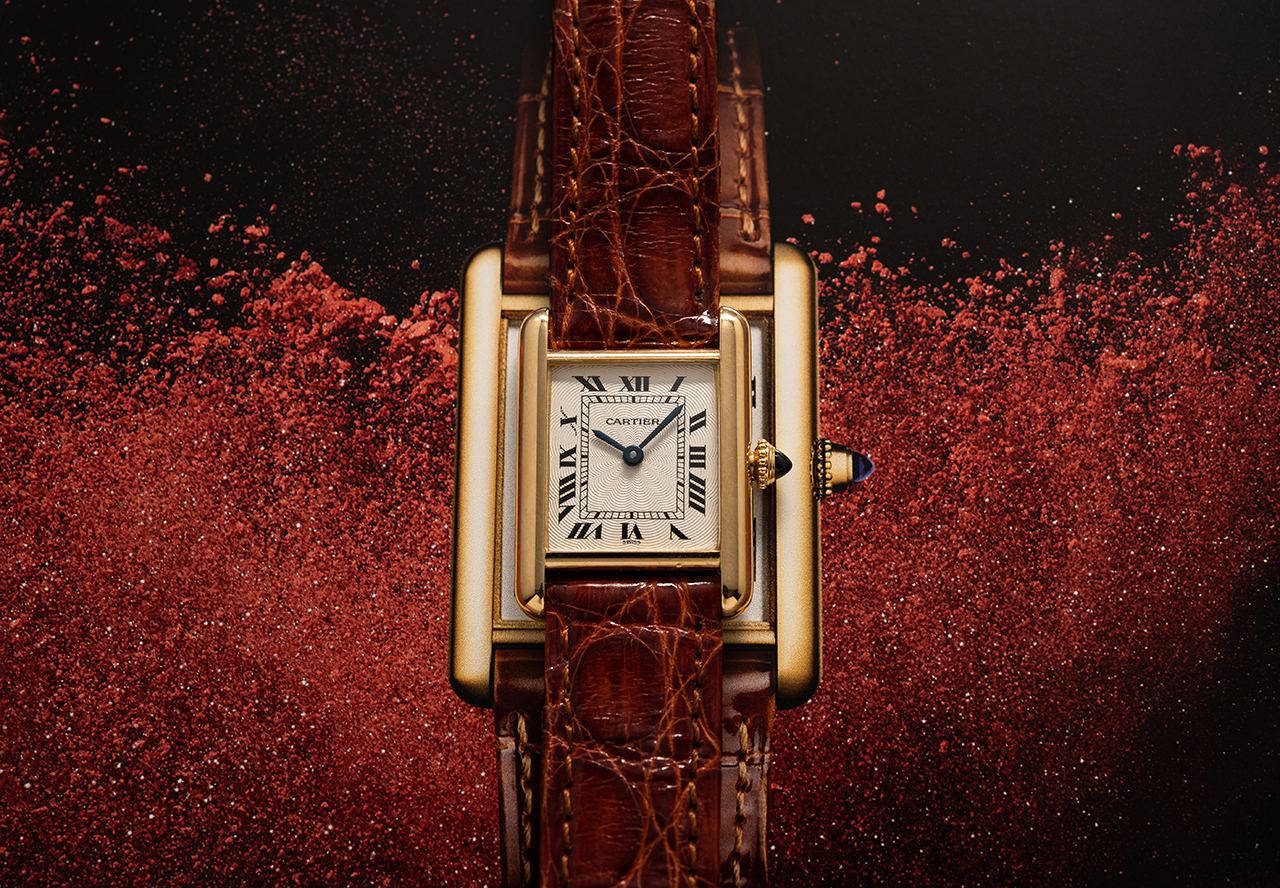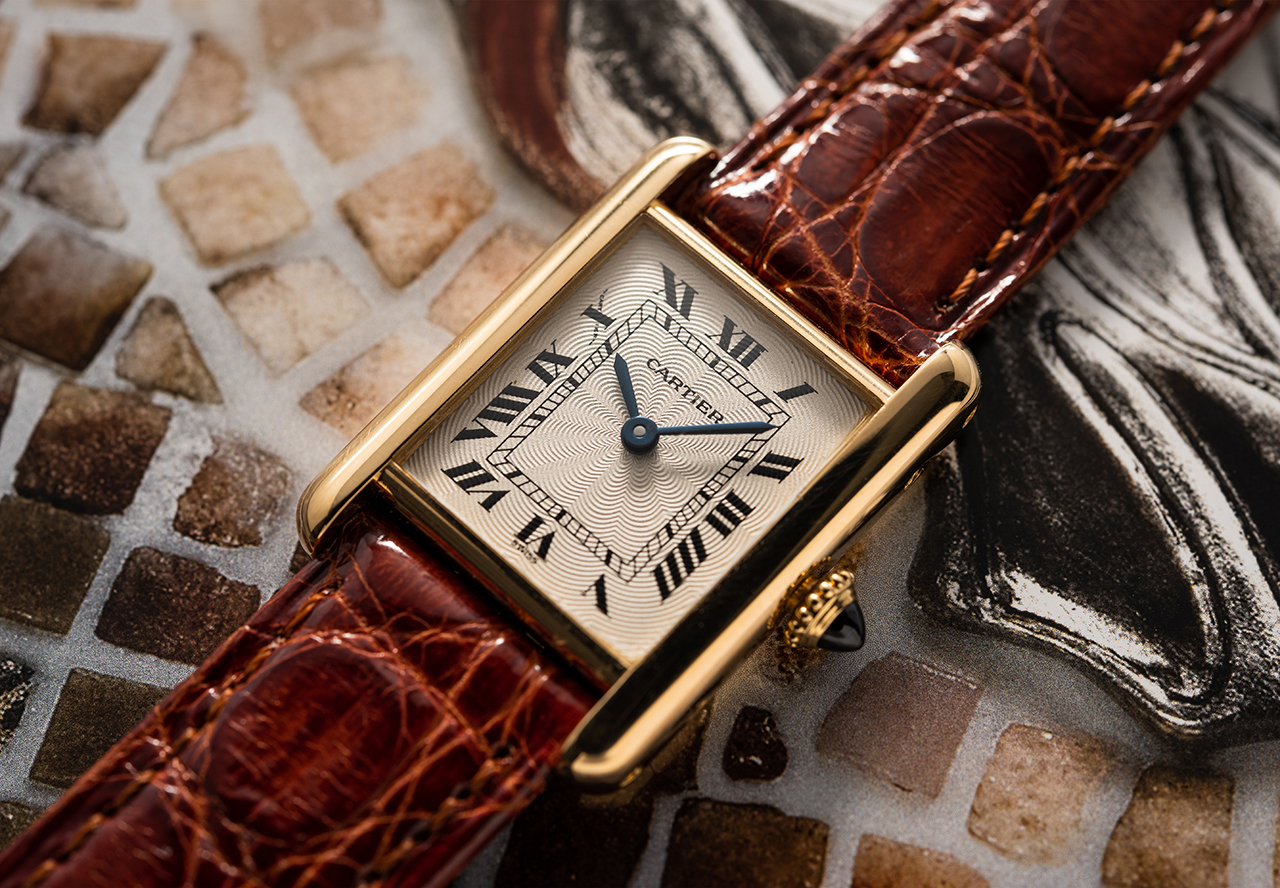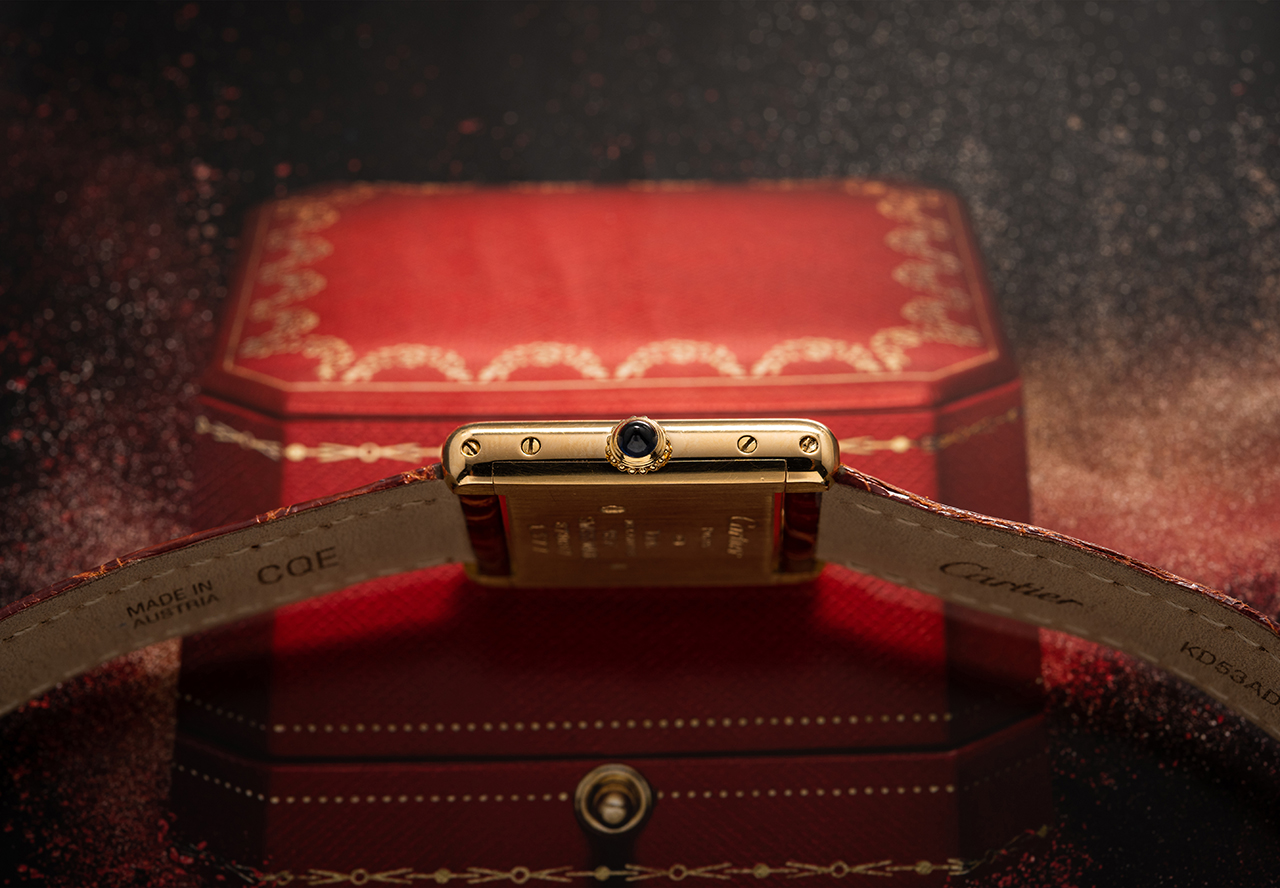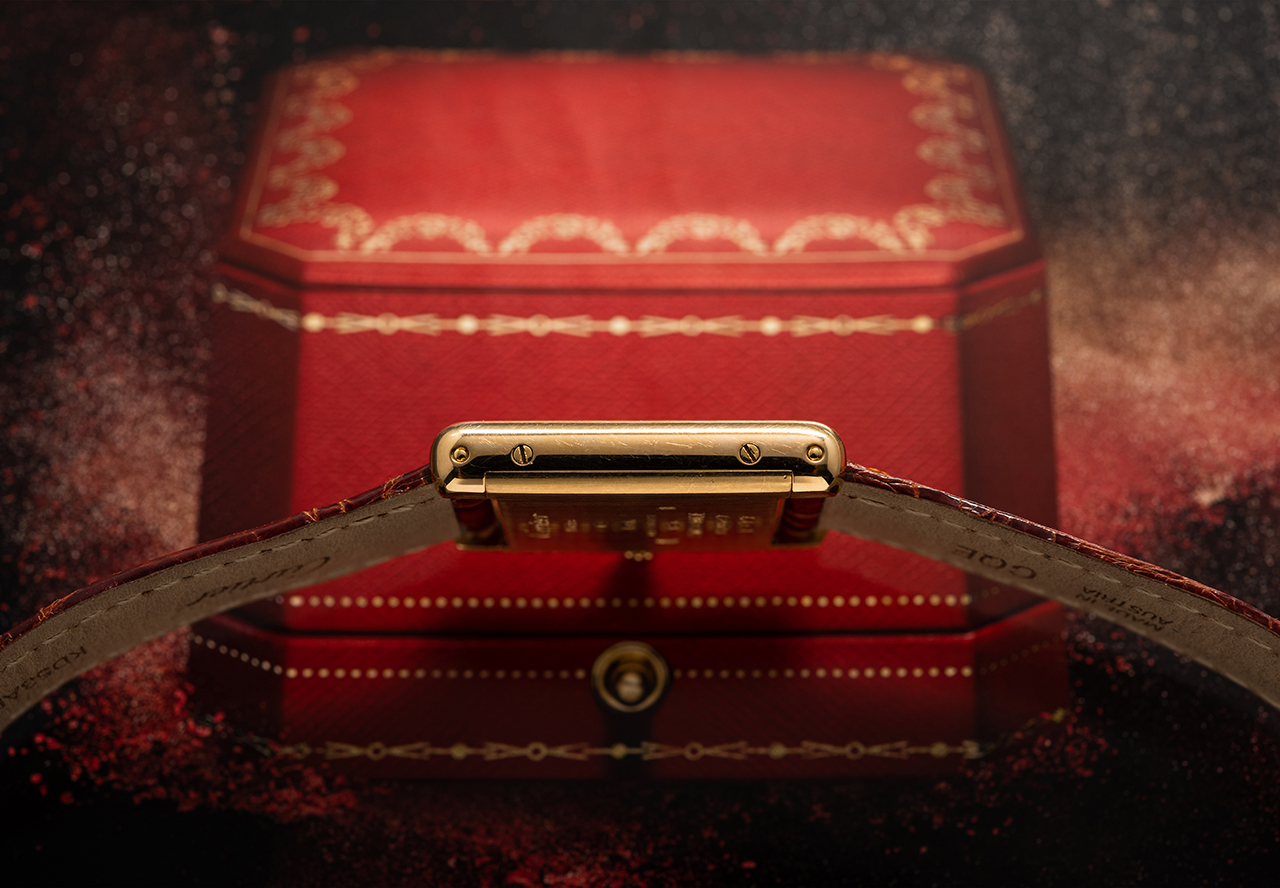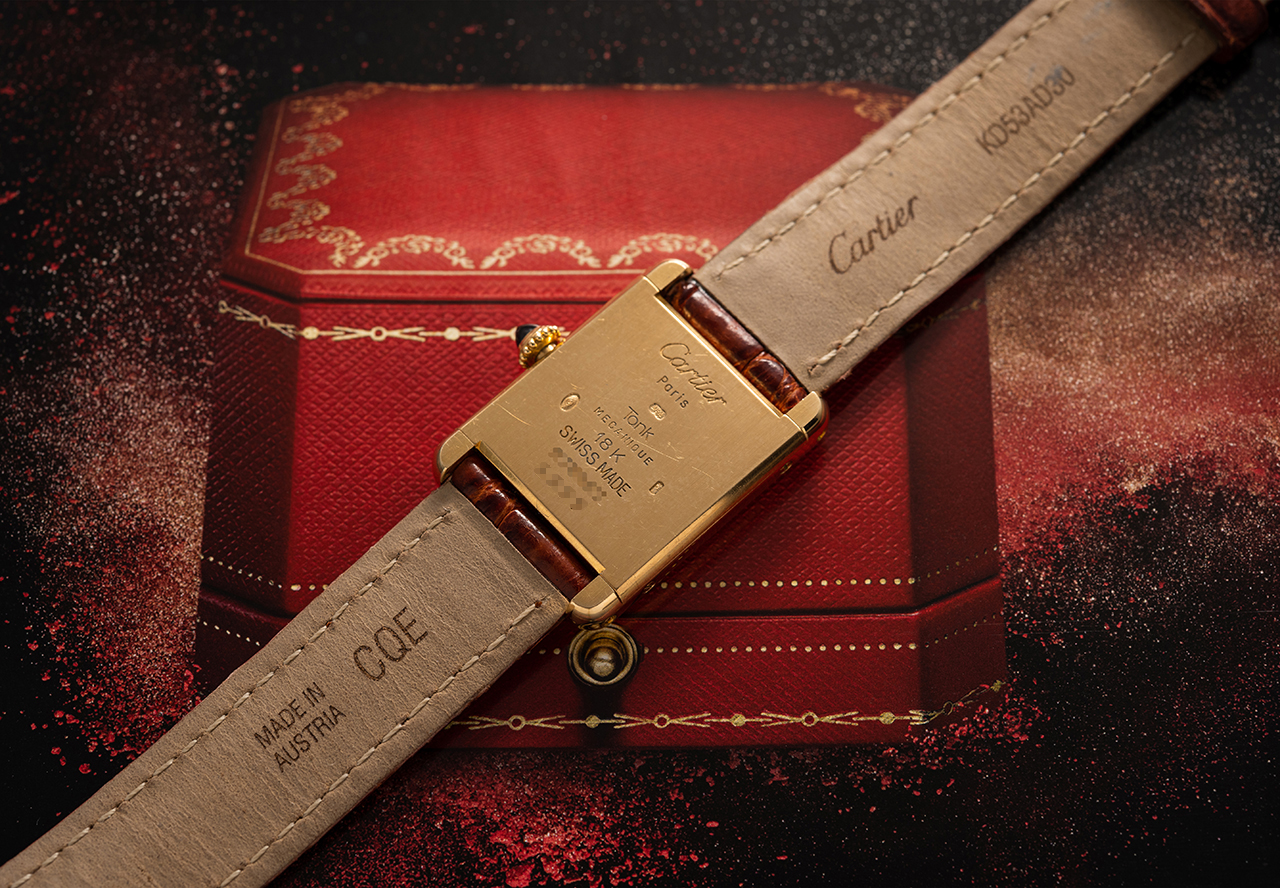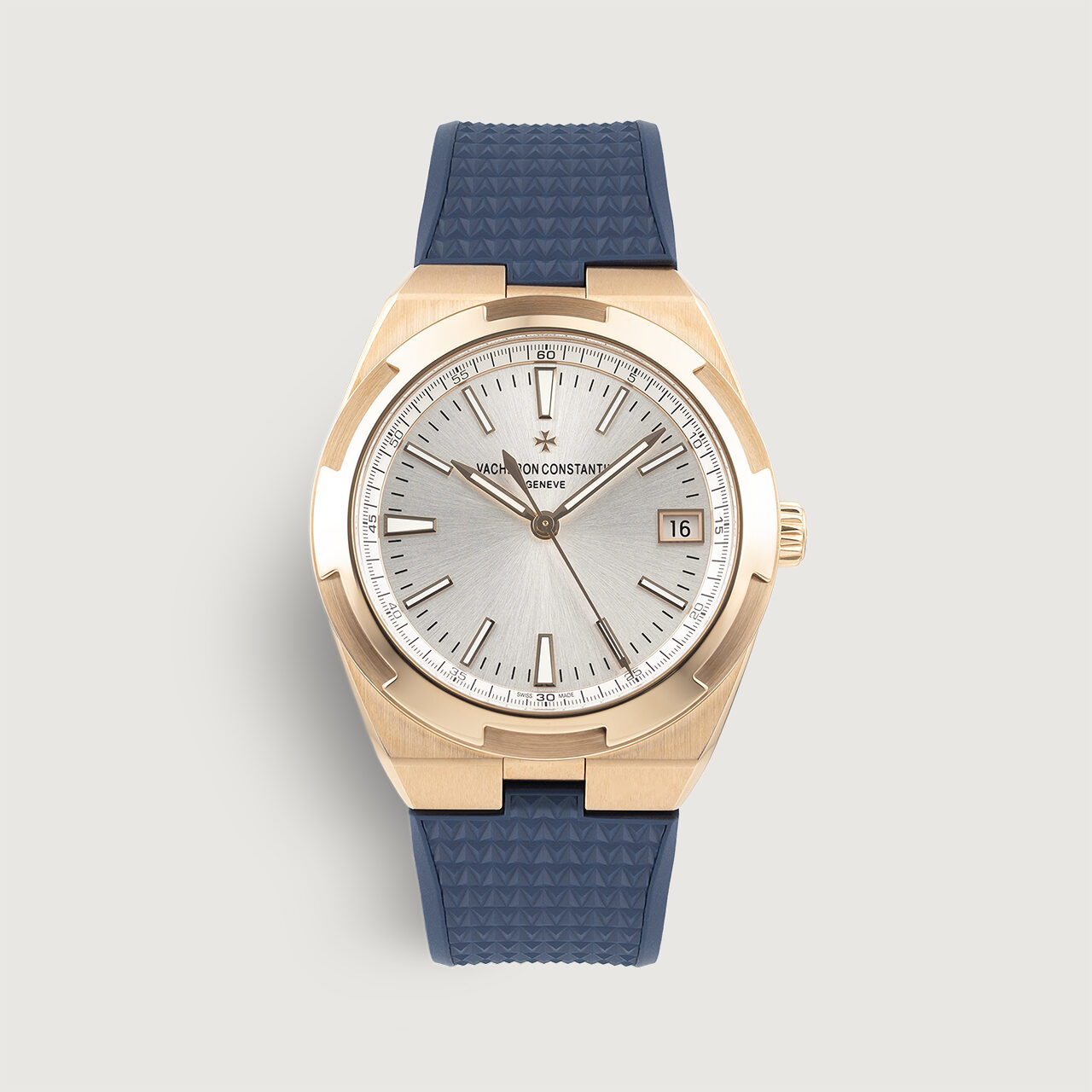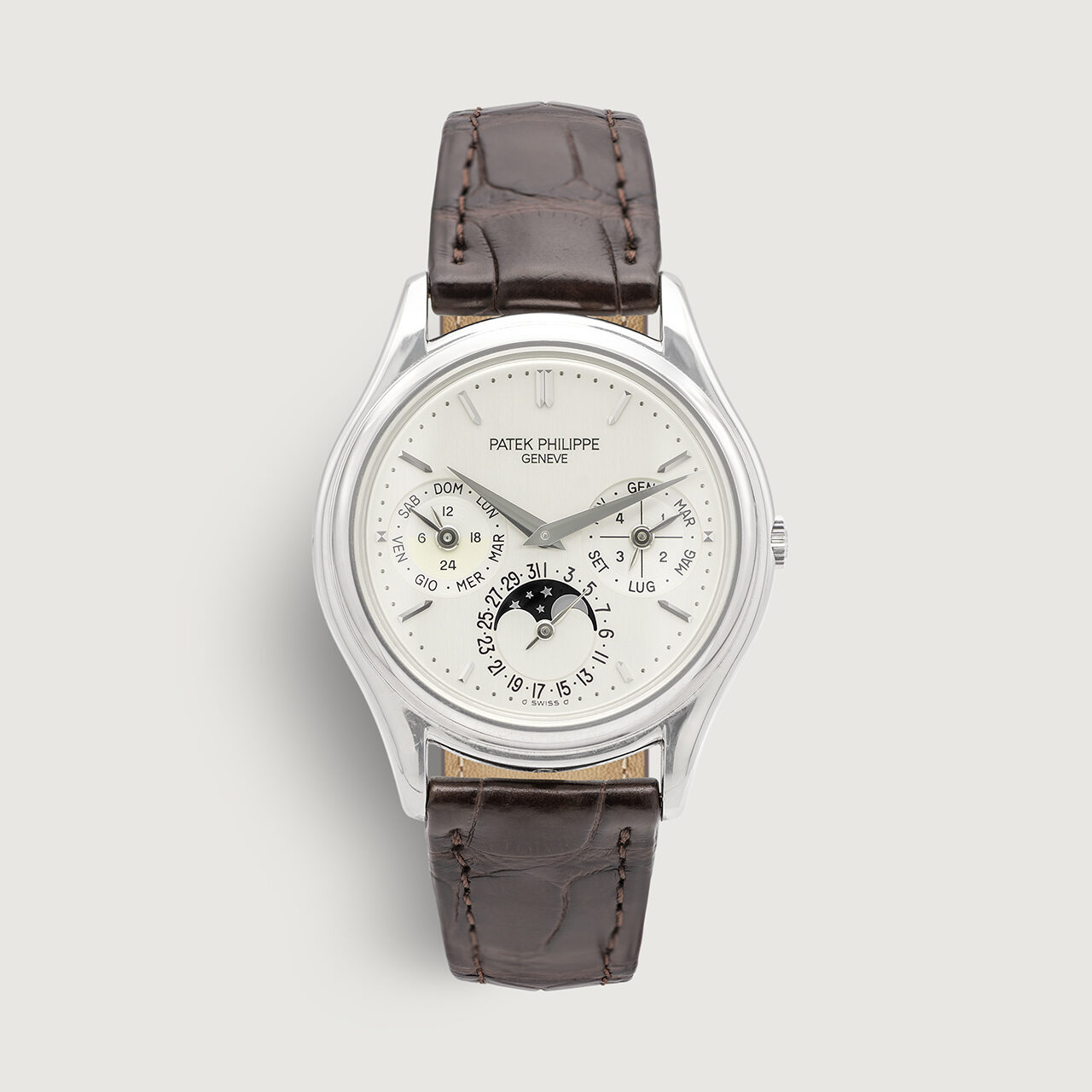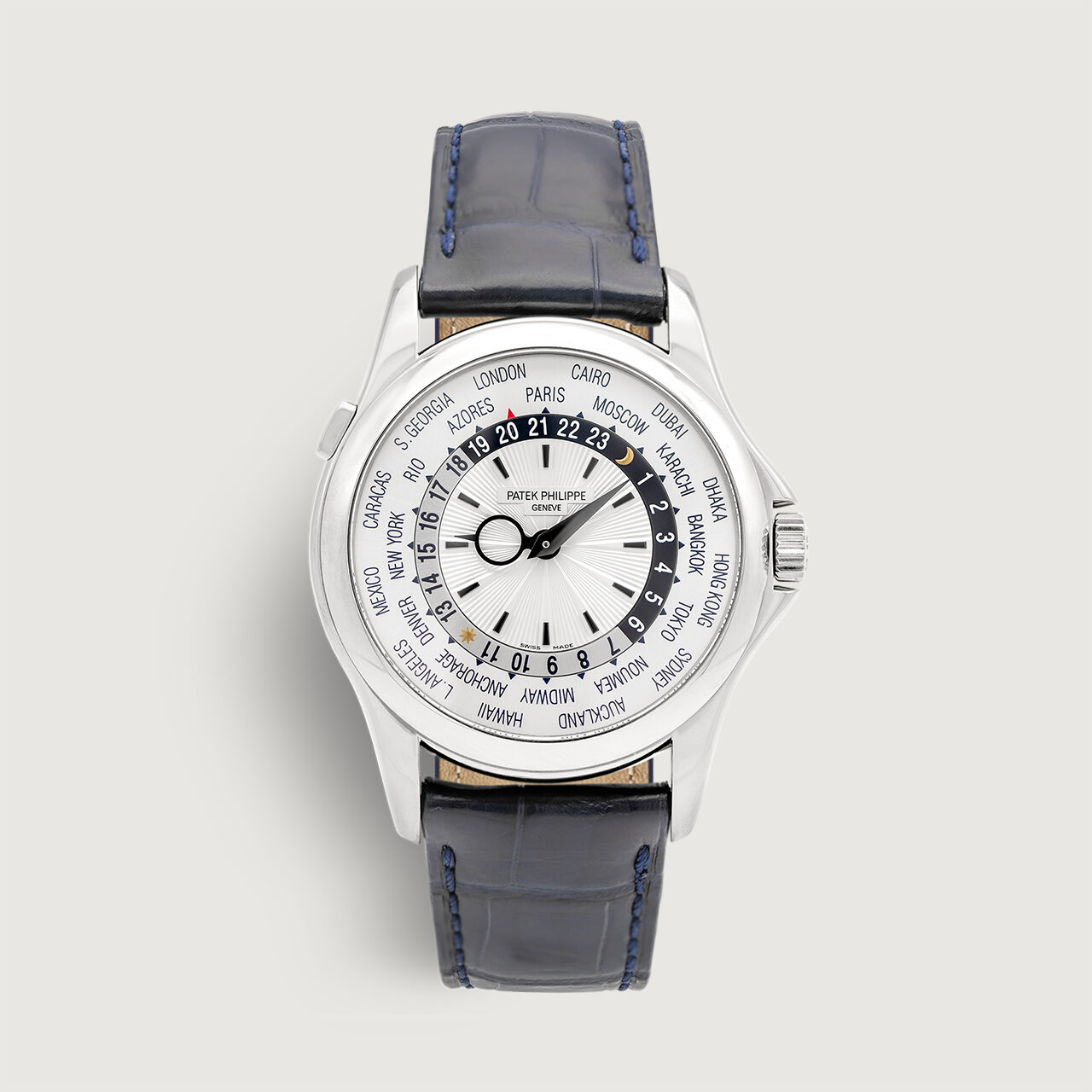Ladies Cartier Tank Louis Guilloché
SOLD
Out of stock
DETAILS
The Cartier Tank Louis Mecanique is among the most classic designs from Cartier. It is a timepiece that transcends passing trends and remains as iconic and elegant as ever. This beautiful example, presented in 18-carat yellow-gold with an understated ivory guilloché dial, dates to the mid 1990s. While many Tanks from the 1980s and 90s featured quartz movements, this piece houses a manual wind cal. 78-1 movement – ensuring that purists won’t need to sacrifice their mechanical priorities when considering this classic timepiece. This particular model with guilloche dial and mechanical movement was the precursor to the CPCP era when Cartier started to refocus more on quality of the movements and timepieces.
The 18-carat yellow-gold case is in fantastic condition overall showing only light wear consistent with age and use. The original guilloche dial is in excellent condition with Roman numeral indices and blued steel handset. Sapphire cabochon crown. The case back displays deep engravings and crisp hallmarks. The watch is complimented by a Cartier leather strap and 18k solid gold pin-buckle.
| LOCATION | London – UK |
|---|---|
| BRAND | Cartier |
| MODEL | Tank Louis |
| YEAR | 1990s |
| REFERENCE | 878087 |
| MATERIAL | 18K Yellow-Gold |
| MOVEMENT | Mecanique, Manual Wind Cal. 78-1 |
| CASE DIAMETER | 20mm |
| BRACELET/STRAP | Burgundy Cartier Leather Alligator Strap w/ 18-Carat Yellow-Gold Cartier Pin Buckle |
STORY BEHIND
Cartier History
Founded in 1847 by Louis-François Cartier after taking over the Parisian-based workshop of his mentor, Adolphe Picard, Cartier has grown from a relatively tiny family business into one of the world’s largest household-name jewellers. While the brand’s success has been immense, it is better attributed to Louis-François’ sons, Louis, Pierre and Jacques, who took charge of the brand in various regions. Louis led the Paris workshop while Pierre went stateside and opened a workshop in NYC in 1909. Just eight years later, in 1917, Pierre opened the iconic 653 Fifth Avenue location, which Cartier still finds itself in to this day.
While the brand’s popularity was originally attributed to their jewellery, the development of their wristwatch business drove the jeweller to new heights. In 1904, Cartier’s first men’s wristwatch, the Cartier Santos, was born when famed aviator Alberto Santos-Dumont told Louis Cartier about the impracticalities of using a pocket watch during flight. Seeing a solution to the problem, Louis designed the Cartier Santos as a wrist-mounted timepiece with a square case, angular bezel and manually-wound movement. In 1907 the brand entered into an agreement with Edmond Jaeger to supply movements to the brand, and from then on, the brand’s reputation was equally rooted in their watches as it was their jewellery. Following the Santos, Cartier released watches like the Tank, the Tortue and several other iconic watches.
Throughout their history, Cartier have developed an incredibly strong reputation as a revered watchmaker thanks to their partnerships with esteemed watchmakers like Edmond Jaeger (who would later enter into a partnership with LeCoultre leading to the Jaeger LeCoultre brands as we know today) and brands like Vacheron Constantin and Audemars Piguet.
While their reputation waned in the 80s and 90s as they turned to jewellery-oriented quartz timepieces, they made a conscious effort to turn things around in the late 90s with a programme that became the birthplace of some of their most sought-after modern watches.
Quartz Crisis and Richemont Acquisition
With the Quartz Crisis taking an unprecedented toll on the watchmaking industry in the 1970s and 1980s, brands had to think outside of the box in order to remain financially viable. Luckily for Cartier, they had just branched into lighters following a proposal from a lighter-manufacturer in the late 60s to sell Cartier-branded lighters under license. Such was the success that Cartier branched out in the early 1970s and began to sell perfumes, scarves and other accessories under the sub-brand called “Must de Cartier.”
In 1976 with the Quartz Crisis taking its toll on the brand’s watch sales, they developed the Must de Cartier Tank – a quartz-powered timepiece that fit into this complimentary collection and began to drive sales once again thanks to its lower price. It was around this time when Cartier was able to reacquire the London and New York sides of the business after being sold off due to German-occupied France being cut off from England and the US. They also began to cancel the licences for their branded products. Instead, they took everything in-house and sold the products themselves under the Must de Cartier brand.
Following the death of Robert Hocq in 1979, the Rupert family began to slowly increase their position within the global brand after Hocq and investors (which included the Rupert family) had purchased the brand in 1972. By 1997 their stake in the company rose to 100% following the formation of the Vendome Luxury Group, which would then merge into the Rupert family-owned Richemont Group in 1997.
